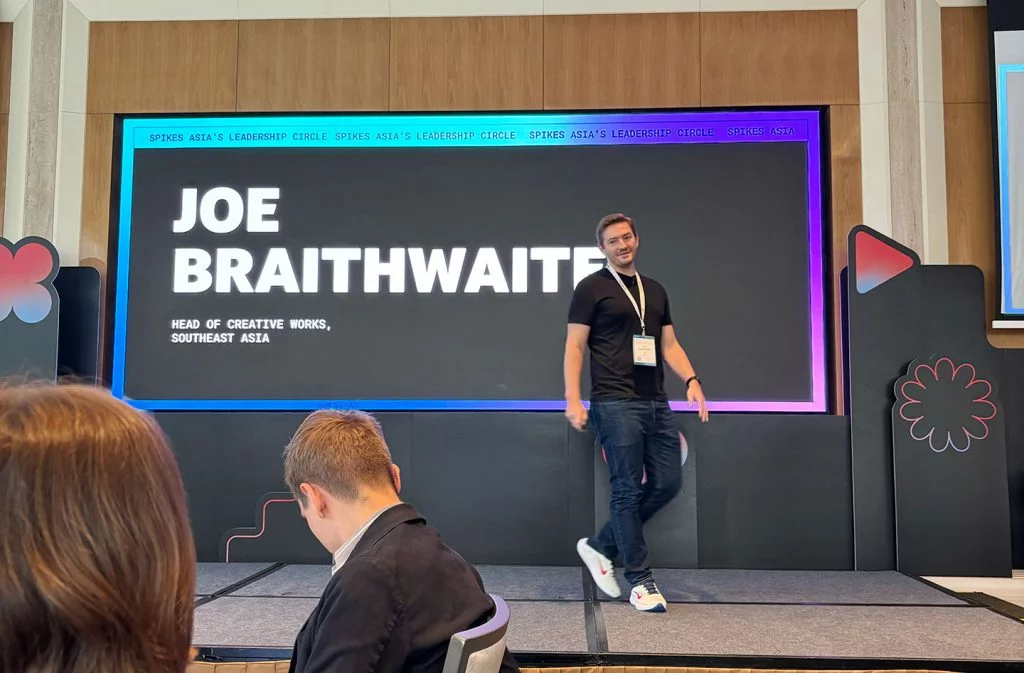SINGAPORE — As the most prestigious and oldest festival of creativity in the region, Spikes Asia was the place to be where conversations on culture, artificial intelligence (AI), and technology happen. In an increasingly demanding market, the sessions answer the age old question: how do brands stand out?
Storytelling needs to shape-shift
To be able to step away from being hard sell, brands need to harness its storytelling. Bloomberg Media Studio’s Global Head Ashish Verma emphasized that this has to be different from advertising and that audiences are people too, not just demographic.
When you sell to an audience who are well-rounded in terms of the media they interact with, your storytelling has to be malleable through videos, podcasts, and activations to be able to deepen experiences associated with the brand.


Another point he brought across is budget. With the tools accessible to marketers, “brand storytelling is not a luxury.” Just because something looks like it was created with a million bucks doesn’t mean it had that allocation.
“Storytelling allows you to be able to make your brand something that adds value to the audience’s life as opposed to just a product promotion,” Ashish emphasized.
Creativity is a business imperative
In The Marketing Society’s fireside chat with Mandarin Oriental’s CEO Joanna Flint, it was shared that marketing leaders tend to focus more on the commercial side of business, resulting to the tendency of denying creativity.
“Creativity is a discipline,” she said, debunking the notion that it’s strictly pictures and art. The challenge, she added, comes down to surfacing creativity.
“Creativity sits in every one of us,” adding that it’s not just limited to an advertising agency and by fostering an environment that encourages freedom within a structure, creativity can truly flourish. Beyond being predictive and deterministic, what marketers should do is be comfortable with change.
AI can open possibilities
Among the hot topics of the festival is AI’s inevitable integration into the workforce. With World Economic Forum’s report of AI taking 85 million jobs in the next few years, usage of AI is not as easy as black and white.


For those on the fence about using AI, Chairmom Merlee Jaime shared that small steps can build confidence for marketers: “The worst thing for a creative is closed doors,” said Merlee. Whereas, she noted, AI can create possibilities by tweaking small things in using AI for every day: “The prompt is ‘What If?’”
Meanwhile, for Sapna Chadha, Vice President at Google, “Building connection is an art scaling it is a science” and that is where AI can come in.
Culture at the core
With all its promise and potential, what AI cannot do is create culture and empathy, she added during the Spikes Asia Leadership Circle session.
“Culture is like an iceberg. There are certain things that you see and there are certain things that you dont,” adding that beyond the food and festivals, there are underlying elements that are not easily replicated. “What AI can do is empower human creativity.”
Idea remains king
“The role of technology is to elevate and amplify the idea,” said Joe Braithwaite, Head of Creative Works, Southeast Asia. He went on to say that one notion that stood out is making the AI the idea when in reality, it should be the elevating force. “The idea is core and AI is there to amplify and enable the idea to be bigger, better, smarter.”

Introducing Google’s TextFX and Lumia, Joe shared how it can expand the thought-process of the mind or collapse the creative funnel by rendering ideas into images and storyboards. By providing an instantaneous way to translate prompts into outputs, Google’s suite of AI tools can streamline processes and easily turn ideation into creation.
“We need to show the creative community how it empowers what they do rather than replace it,” he concluded.
adobo Magazine is an official media partner of Spikes Asia 2024.










